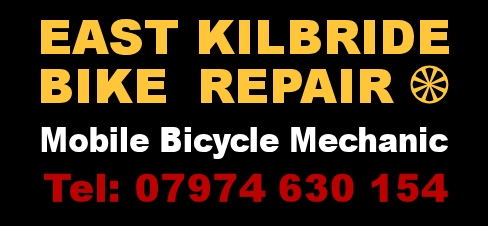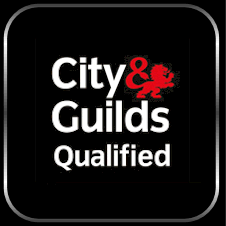Bike Repair FAQs
A selection of commonly asked questions about bicycle repair and servicing.
I’ve just got a puncture will you come and fix that?
Yes, we carry an assortment of inner tubes.
Is all your work Guaranteed?
Yes, all work is fully guaranteed with a 1 year guarantee on parts.
Can you pick my bike up from work?
Yes no problem (based on geographical location).
Can you tell me how much it will cost to repair my bike over the phone?
It is extremely difficult to make a diagnosis over the phone,
There can be more than one issue causing a problem, so we refrain from doing so. However, if you know the upgrade or repair, for example replacing both gear cables then use the set menu.
What’s the best pressure for my tyres?
Ah, this is not a simple question to answer there is a maximum pressure guide for your specific tyre, never go above this. So we must be thinking of pressures at or below this maximum figure.
However it has a direct relationship between the load (weight of bike & rider) put on the tyres & their width, also tyres kind of act like mini shock absorbers providing comfort.
Without stating the obvious our rubber is the only contact we have with the road surface, this area is called the contact patch, concentrate on this part for a moment
When your sitting on your bike your tyres want to visibly bulge a little at the contact patch to gain maximum Grip. If they don’t the pressure is too great, however on many road bikes you barely see this.
On my Road Bike I run Specialized Roubaix 700 x 23 at 95psi at the back (where most of the weight is) and 90 at the front, this gives me comfort & grip for my weight 11 ½ stone on a variety of road surfaces.
However for those racing on a smooth road surface this would be too low, they can run anything between 110psi and above. The theory is less area contacting the ground, less friction, more speed, yet definitely losing out on some contact patch grip.
As you can see there is no hard and fast rule. You should experiment with tyre pressure, base it on surface and feed back from tyre grip or lack off and not forgetting your comfort of course.
When I use my mountain bike at Glentress I run Schwalbe Nobby Nics 2.25s tubeless, my pressures are extremely low 25psi front & 30psi on the rear this gives me unbelievable traction & comfort if you like, but it won't suit everyone, so the answer is to try-out different pressures, its fun!
One thing I must mention is that you should try never to have your tyres so low that it can cause a pinch flat (snakebite). This can happen if you hit a sudden depression like a pothole with an under inflated tyre, it deforms to the extent that the rims pinch the inner tube causing a puncture.
On inspection you see two distinctive snakebite holes in the inner tube.
Why & when do I change my chain?
Well let's suggest that it's not so rusted over that it wouldn’t look out of place on the Titanic.
Chains are incredibly efficient but they have to put up with a lot of abuse. The pins (rivets) and rollers wear down, appearing to lengthen the chain from its original state. The secret is to change your chain before it lengthens too much thus saving wear on your cassette sprockets as this wears with your chain. When your chain is lengthening the teeth on your sprockets are also widening, so if you fitted a new chain to a worn sprocket it would ride up over the teeth and slip.
I could say that you should replace it having cycled over a set distance but most of us don’t record this, so to prevent wear to the cassette sprockets, chainrings and gear changers you can measure it.
You can buy a chain checker which does the work for you, but this is a simple method. Count out 25 pins inclusive, this should measure 12”on a new chain. Using this as a marker point You should be looking to change when this measurement reaches between 12 1/16” and before reaching 12 1/8” after this point you will have to replace both chain and sprockets. So keep an eye on your chain and save money in the long term.
Why do perfect-shifting gears gradually go out of break?
This is almost always because the cable has stretched and needs adjusting or replacing.

Do tyres with tread give better road holding than slick tyres?
No. Think about the surface you are going to cover, is the surface harder or softer than your tyres? This is how grip works.
Your aggressive treads on mountain bike tyres dig into the soft trail giving grip.
Slick tyres gain grip through the tiny imperfections on the hard road surface digging into the tyre and so if you are only going to be cycling over the hard road surface you never need tyres with tread.
You want as much rubber contacting the road as possible therefore wide slicks offer more contact than a treaded tyre which has gaps and hence less contact. Bicycles don’t aquaplane like motor vehicles.
I can rock my wheel from side to side what’s going on?
Your hubs need adjusted. If they also feel and sound rough they are overdue a service. If cup and cone you can strip the hub open and have a look at the condition of the bearings, they should have a mirror like finish. If they don't you need to clean the whole hub and replace them. The bearings are more vulnerable meaning that they wear out quicker than the hub and cone surfaces. If you have cartridge type bearings they can also be adjusted but if they are knackered they need to be knocked out and a new set press fitted.
I think Aheadset is loose?
To test this apply the front brake and rock the bike back and forth you will feel and maybe hear a knocking sound
If you have Aheadset type you can adjust this by loosening the bolts on your stem then tighten the top cap slightly. Do the above test again until there is no rocking, then tighten your stem bolts to their correct torque, not forgetting to realign your wheel.
If it has been like this for a while it's likely your bearings will need to be replaced.
How do I know when my hydraulic brakes need bled?
There will be a spongy feel to them with a total lack of power because air is trapped in the system. In simple terms the air will absorb the power leading to this mushy feeling and it must be removed, allowing uninterrupted travel of the fluid from the lever to the caliper pistons.
Why and how do you set the sag on my forks?
Our suspension helps to reduce rider fatigue and improve our overall bike control by allowing the wheels to track the terrain and increase traction. Sag is the amount by which your suspension compresses from its load (rider and bike weight)
So sag is essential, it should be set up between 15% and 25% of the fork's full travel, depending on the terrain and how aggressive your riding style is.
If you haven’t got an o-ring around your stanchion tube put a temporary cable tie around it. Sit on your bike with all your running gear on and slide the o-ring down the fork to the wiper seal.
Carefully climb off the bike and measure the distance from the wiper seal to the o-ring - this is your sag.
If you have air forks increase or decrease your pressure till your sag is correct. If you have coil sprung forks and it sags too much then pre-load the spring with the dial on your fork crown. If it sags too little with NO pre-load you’ll need to fit a softer spring.
Setting sag is again a lot like tyre pressure in that it is to some extent a personal choice, so experiment on various conditions, different course - different sag.


